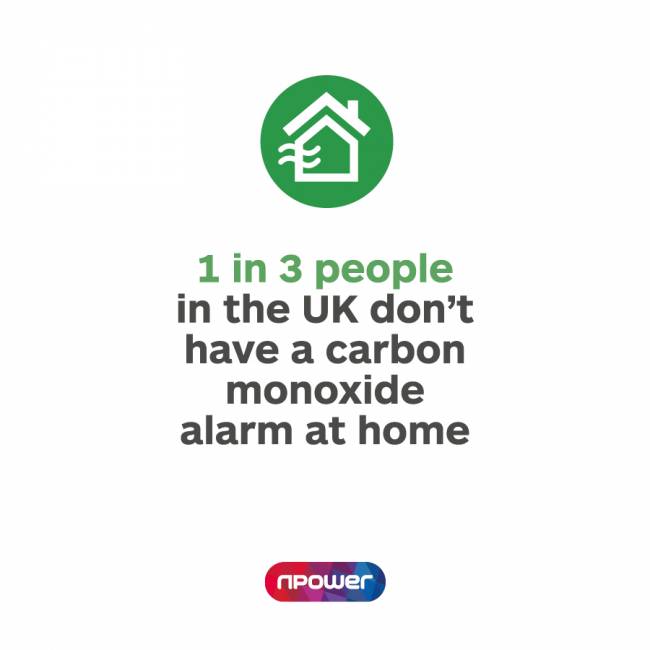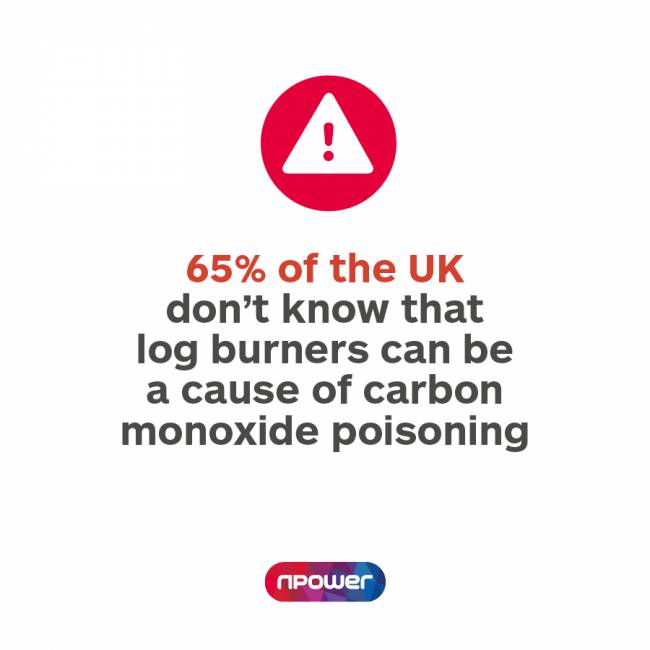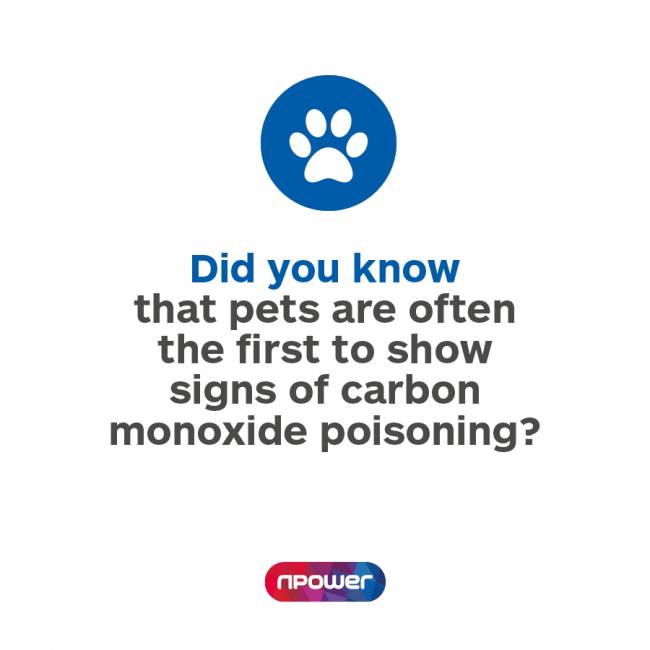Shocking new research reveals the risks some UK families are taking when it comes to carbon monoxide (CO) poisoning, as 43% of people admit they wouldn’t know what to do if there was a leak in their home.
In association with npower

To mark this year’s Carbon Monoxide Awareness Month (November 2017), npower has released findings from its annual carbon monoxide (CO) research* to highlight how at risk the UK could be from CO poisoning. The results show there is a clear disparity between the UK’s awareness of CO poisoning and the UK’s actual understanding of what the symptoms are, which appliances can be a cause, and also what people should do if they suspect they are suffering from CO poisoning.
The research sheds light on how Britons could be worryingly underprepared to spot cases of CO poisoning. Despite nearly 96% of the UK (95.8%) saying they know CO poisoning can be fatal, less than 5% (4.5%) are actually able to correctly identify the most common symptoms.
Dizziness, headaches, nausea and vomiting, tiredness and confusion, shortness of breath and difficulty breathing, and stomach pain are the most common symptoms of CO poisoning. But, one in six people (15.1%) incorrectly think a metallic taste in your mouth would be a symptom and one in 10 (9.6%) think a fever would be a symptom. Although many symptoms of CO poisoning are similar to flu, a fever would never be a sign.
Further cause for concern is that one in four people (25.3%) don’t know that CO has no smell, and well over a third (43%) admit they wouldn’t know what to do if there was a CO leak in their home.
Each year in the UK over 200 people are admitted to hospital with suspected CO poisoning and around 50 people die unnecessarily from it. This new research suggests people in the UK are unaware of what the symptoms of CO poisoning are, so the true number of people affected could potentially be much higher.
Carbon monoxide is completely invisible, it has no smell and no taste, so the only definitive way to detect a leak is with a CO alarm, but despite this, less than two thirds of UK homes (59.4%) have one installed. The top three reasons people gave to justify not having a CO alarm were: It’s on my to do list – I just haven’t done it yet (30.3%), I’ve never had one before (27%) and I don’t think I need one (16.7%).
More than a third of UK homes (33.7%) aren’t fitted with a CO alarm
Only 5% of the UK can identify the most common symptoms of CO poisoning
Just a third of the UK (35.2%) know that a log burner can be a potential cause of CO poisoning
Over a third (42%) say they would not go to hospital if they thought they had CO poisoning
RAISING AWARENESS
To get more people talking about the dangers of CO poisoning this Carbon Monoxide Awareness Month, npower is inviting children across the country to bring the risks of CO to life by drawing what they think the deadly gas would look like if it wasn’t invisible. The aim is for lots of ‘CO monsters’ to be shared across social media with the hashtag #COMonsters which could ultimately help to reduce the number of completely preventable deaths every year.
Carbon monoxide is produced when fuels such as gas, oil, coal and wood don’t fully burn, so incorrectly installed, poorly maintained or poorly ventilated household appliances like boilers, cookers and fires – both gas and solid fuel, can all be causes of CO poisoning.
Between 1995 and 2015, only 35 per cent of deaths from CO poisoning were actually from mains gas appliances or heating. It was, in fact, appliances that burn solid fuel, portable gas bottles and, petrol and diesel that represented the majority of the remaining 65 per cent. However, when respondents were asked which household appliances could be a cause of CO poisoning, only a third (35.2%) knew that a log burner could be a potential cause of CO poisoning.
Matthew Cole, Head of Domestic Policy & Social Energy Action at npower says, “It’s concerning to see these results from our research, as they clearly show there’s a serious gap between awareness of CO poisoning and understanding what the symptoms are, which appliances can be a cause and also what people should do if they suspect they are suffering from CO poisoning. We think there’s a real need for the UK’s understanding to be increased to help reduce the numbers of completely preventable deaths from CO poisoning each year and we hope young budding designers everywhere will help to do this with their CO Monster designs.”
The research also shows that almost two thirds of the UK (61.1%) have not had their boilers serviced in the last year. And, one in 14 people who live in privately rented accommodation (7.3%) who legally should have had a CO alarm fitted by their landlord (because their rented home has an appliance that burns, or is capable of burning solid fuel), do not have one installed.
When respondents were asked what they would do if they thought they were suffering from CO poisoning, only half (57.7%) said they would go to hospital. If you suspect you or someone you know is suffering from CO poisoning, you should:
1. Stop using all appliances
2. Open doors and windows
3. Evacuate the property immediately
4. Call the gas emergency number on 0800 111 999 to report the incident
5. Don’t go back into the property and seek immediate medical help.
For more information about carbon monoxide and to find out how to protect your family, visit: npower.com/co-safety.
* Research surveyed 2,000 people across the UK (conducted by Census Wide), aged 16 and above.
npower (npower Group plc) is one of Britain’s leading energy companies and is part of the innogy SE group.










